Luminary Gourd “Our Land is Our Legacy”
Honors Native American Indian Culture and Art in Nature
| By Clarke County Office of Economic Development and Tourism Lumbee Indian artist René Locklear White spent plenty of time in Washington D.C, with her 22-year career in the Air Force, now as a retired Lieutenant Colonel she wears boots for humanity bringing recognition to Native American Indians’ contributions to Virginia and beyond. Recently, the 52-year-old Clarke County Va. resident carved and painted a dried gourd for the Executive Mansion holiday tree in Virginia’s state capital. The governor’s official residence worked with the Virginia Association of Counties and Virginia Municipal League to collect local artisan-made, handcrafted ornaments from Virginia’s localities using the theme, “Home for the Holidays.” The deadline to submit ornaments was Nov. 1. Virginia’s Clarke County officials searched for an artisan who could fashion an image suitable to represent their county. 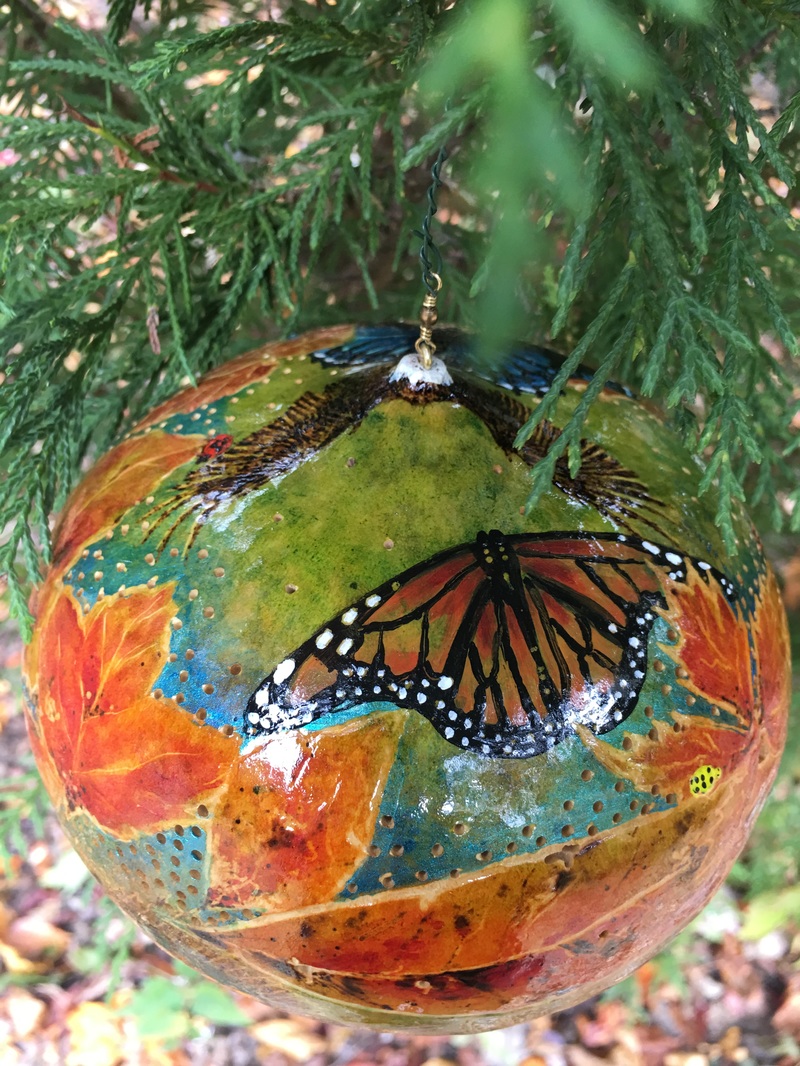 Close up of the oval-shaped dried gourd 3” x 5 ½” with ink-dyed, carved, burned and painted local plants and wild life from Clarke County, Virginia. This Luminary gourd holiday ornament titled, “Our Land is Our Legacy” by René Locklear White gourd is Clarke County’s submission for the Executive Mansion holiday tree in Virginia’s state capital. They chose René who is a military veteran, Lumbee Native American Indian and nature artist. She describes her mission as “cultural rescue” where she volunteers as president of Sanctuary on the Trail™ a non-profit Native American Indian church that helps leaders and brings recognition to contributions of indigenous to reduce suffering. Her ornament is an oval-shaped dried gourd 3” x 5 ½.” She ink-dyed, carved, burned and painted local plants and wild life on to the gourd to honor Clarke County’s historical motto, “Our Land is Our Legacy.” Clarke County is a planned open space community rich with forest cover, wetlands, unspoiled countryside, wild uncultivated areas plus locally grown foods and wines located at the foot of the Blue Ridge Mountain complete with Appalachian Trail and Shenandoah River. A main feature on the ornament is a local phenomenon in Clarke County, the colors of autumn; depicted by fall leaves circling the gourd. Blues and greens blend around the leaves to symbolize the state’s scenic Shenandoah River that flows through Clarke County like an oasis in the valley. Under the floating leaves are two small Sun Fish (also called Pumpkinseed Fish or Perch), added to represent fish indigenous people caught hundreds and hundreds of years ago in Clarke County using fishing weirs or ancient stone fish traps which are still existent here today. René said gourds are nature’s canvas. She prefers to work outside and all her work is done free hand with no pencil marks or stencils and a lot of fun power tools. 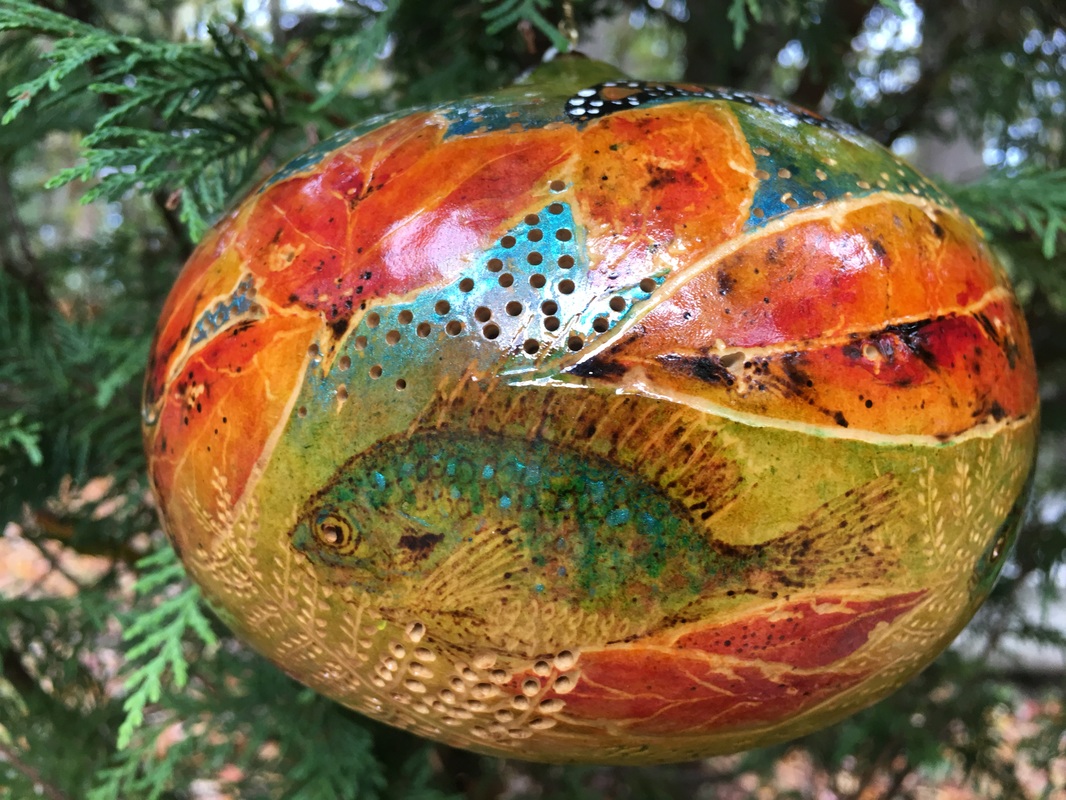 Close up of the oval-shaped dried gourd 3” x 5 ½” with ink-dyed, carved, burned and painted local plants and wild life from Clarke County, Virginia. This Luminary gourd holiday ornament titled, “Our Land is Our Legacy” by René Locklear White gourd is Clarke County’s submission for the Executive Mansion holiday tree in Virginia’s state capital. | Close to 100 hours artist hours spent |
About the ArtistsRené’s personal goals are to be a VLGS life member, earn a Virginia fine art fellowship, create a gourd worthy of display by the Smithsonian’s National Museum of the American Indian and farm and grow her own gourd varieties. René became a VLGS member in 2013 after entering her first gourd into the local Clarke County Fair. She received a blue ribbon and the VLGS Gail Smith Memorial award, in memory of deceased gourd artist Gail Smith a devoted VLGS member and active Clarke County resident. VLGS is Virginia’s official Delta chapter of the American Gourd Society. Now, René’s mission of “cultural rescue” spans three counties Clarke, Loudoun and Frederick. She said, “There are no lines on the ground that separate our counties no more than there are lines that separate us in humanity.” René’s vision is to change common misconceptions about Native Americans and raise awareness concerning Native American Indian culture, especially among students and teachers. According to Indian Country Today Media Network, “a staggering 87 percent of references to American Indians in all 50 states’ academic standards portray them in a pre-1900 context.” That means students are graduating from high school without even basic knowledge of contemporary Native challenges or culture. | In Clarke County René leads a biennial (every two years) Native American Indian harvest festival called The Gathering. More than 5,000 people attended The Gathering in 2015. René along with a close-knit team of volunteers are planning for The Gathering 2017 to be twice as big. The Gathering is an educational celebration of agri-Culture. René also teaches art to (Rose Hill) senior living center residents. Recently, in Loudoun County René painted a wine barrel called “Listen,” that highlights sights and sounds Indians gave Loudoun County, that raised $600 for Purcellville. She and her husband Chris also helped teach children at the Village Montessori School at Bluemont how to build an Indian Village, attended by more than 5,000 people during the Bluemont Fair. In Frederick County René leads Native American Indian activities during Winchester’s spring Kidz Fest. Last year, more than 800 children stopped at her non-profit booth to ask and Indian a question, learn an Indian dance or hear a Native American Indian story. According to Indian Country Today Media Network, “a staggering 87 percent of references to American Indians in all 50 states’ academic standards portray them in a pre-1900 context.” That means students are graduating from high school without even basic knowledge of contemporary Native challenges or culture. |
| GOURDS Thanks to counties like Clarke and modern seed-savers, we can continue to cultivate a variety of gourds. Gourds like this ornament, pumpkins and squash are members of an enormously diverse family of over 700 species called “Cucurbita.” Gourds are squash and vice versa. Squash are divided up into two categories: tender summer squash and hard-skinned winter squash. Hard shell gourds like this one can last many life times. Archaeological sites date gourds as early as 13,000 B.C. People around the globe used gourds for storage and carrying, for mixing bowls, pottery and dippers. Gourds are still prevalent in Native American Indian culture today as rattles and drums in ceremonies and dance. In fact, one sacred group of Native American Indian dancers is called the “Gourd Dancers.” The Navajo modern-day squash blossom necklace originates from squash blossoms as they begin to open. | VIRGINIA INDIANS Before contact, there were millions of Native American Indians living in present day United States. They were divided into more than 1,000 different tribes or kinship groups. Here in Northern Virginia they left us local words like: Sycolin Creek, Hunger Run, Conoy Island, Seneca Falls, Rappahannock River, Catoctin Mountain River, Massanutten and Shenandoah, as well as many artifacts and sites scattered across Clarke County. Like René and Chris, there are many Native Americans Indian individuals living in Virginia from various groups across the North America. However, today there are only 11 Native American Indian tribes that call Virginia home: Cheroenhaka Nottoway, Chickahominy, Eastern Chickahominy, Mattaponi, Monacan Indian Nation, Nasemond, Nottoway of Virginia, Pamunkey, Patawomeck, Rappahannock, and Upper Mattaponi. Just last year (2015), the U.S. government finally granted federal recognition to Virginia’s first Tribe: Pocahontas’ tribe, the Pamunkey. Virginia has two state-recognized Indian reservations the Mattaponi Reservation on the Mattaponi River which is on the opposite side of King William County from the Pumunkey Reservation on the Pamunkey River. |
VIRGINIA’S 11 TRIBES AND LOCATIONS
- Cheroenhaka Nottoway – Courtland/Southampton County
- Chickahominy – Charles City County
- Eastern Chickahominy – New Kent County
- Mattaponi – Mattaponi River/King William County
- Monacan Indian Nation – Bear Mountain/Amherst County
- Nasemond – Cities of Suffolk and Chesapeake
- Nottoway of Virginia – Capron/Southampton County
- Pamunkey – Pamunkey River/King William County
- Patawomeck – Stafford County
- Rappahannock – Indian Neck/King & Queen County
- Upper Mattaponi – King William Count

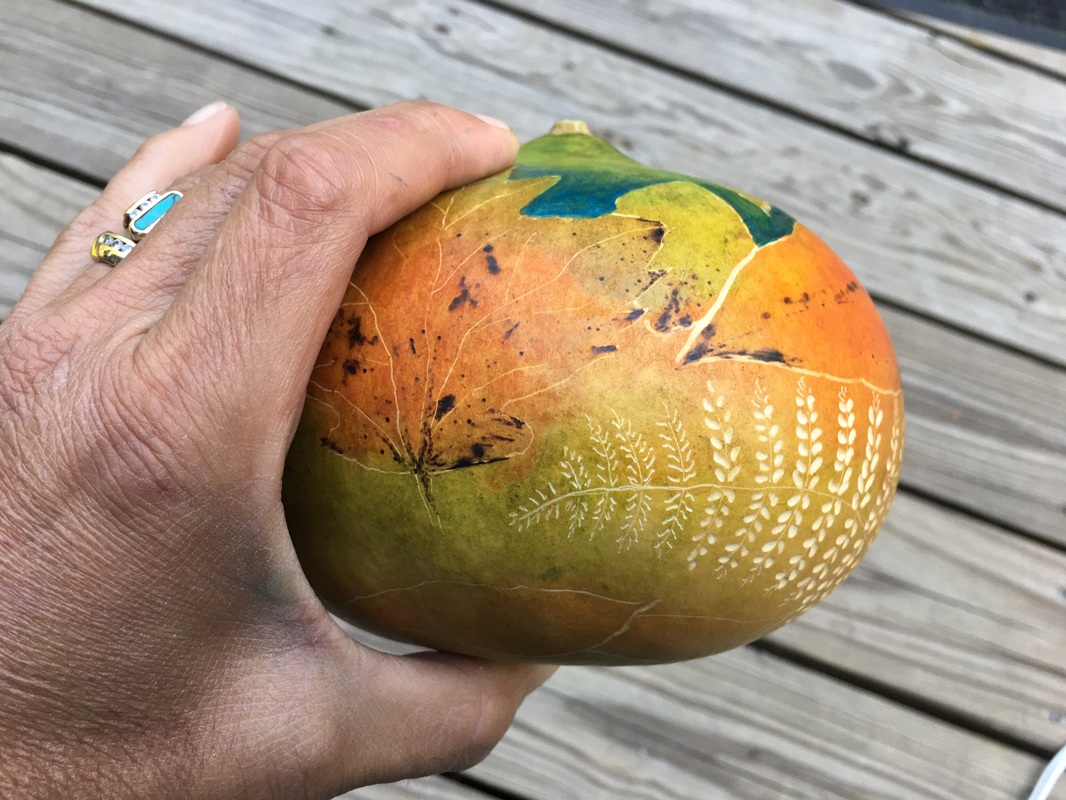
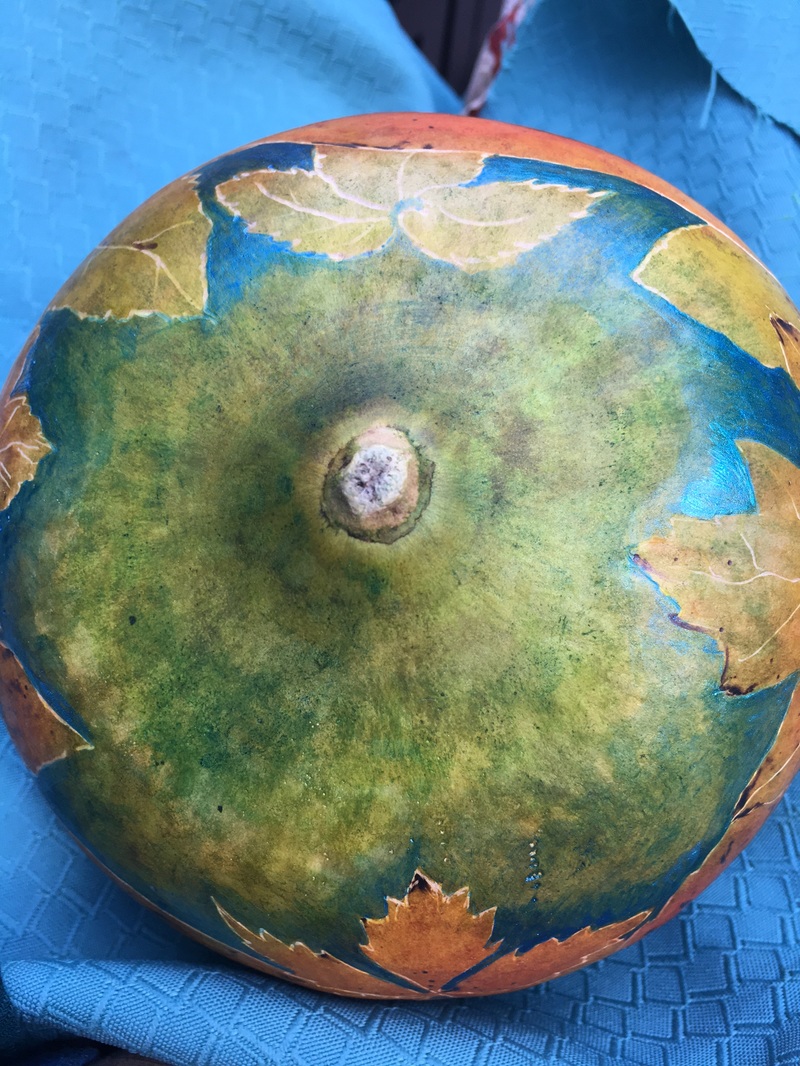
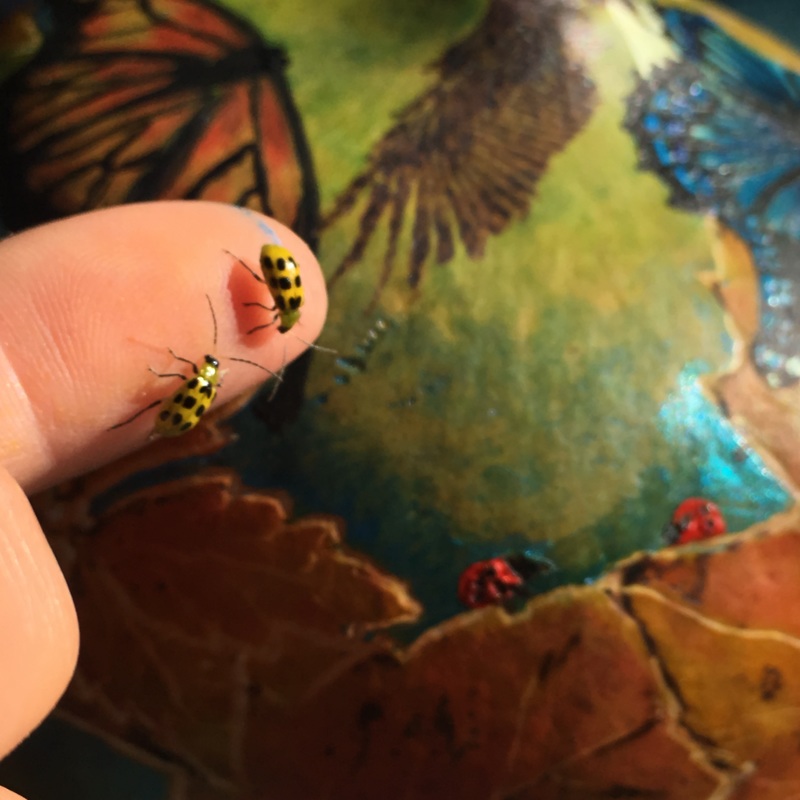
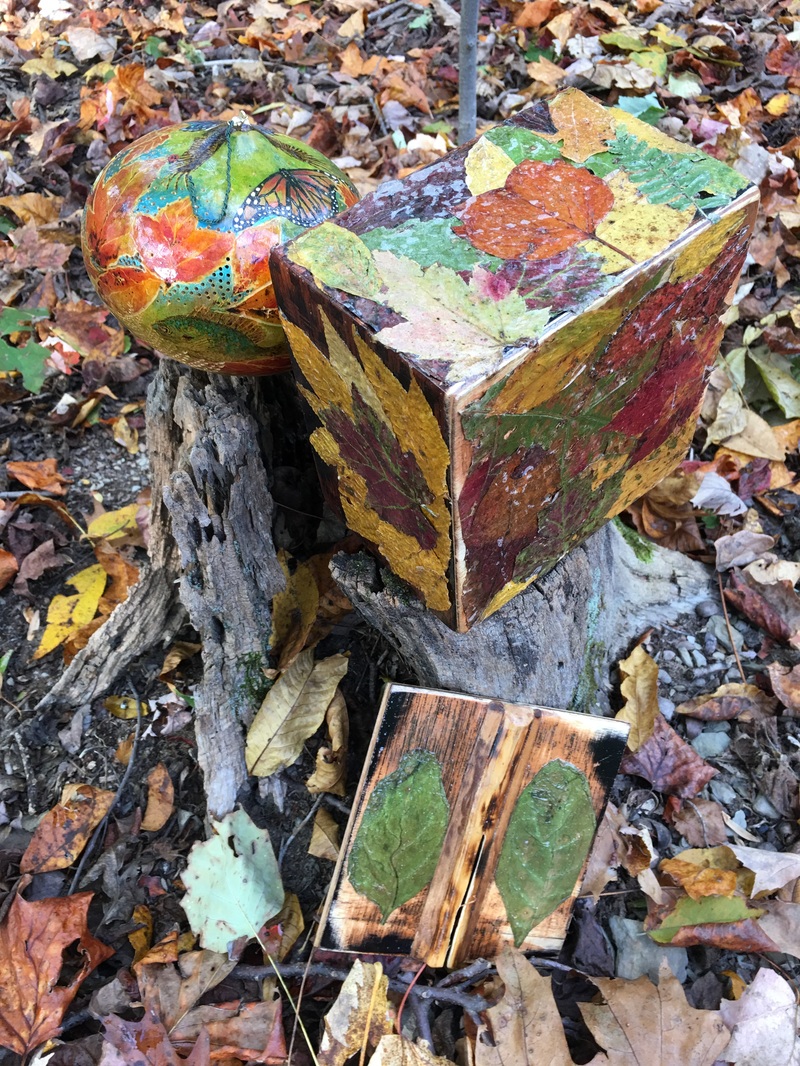
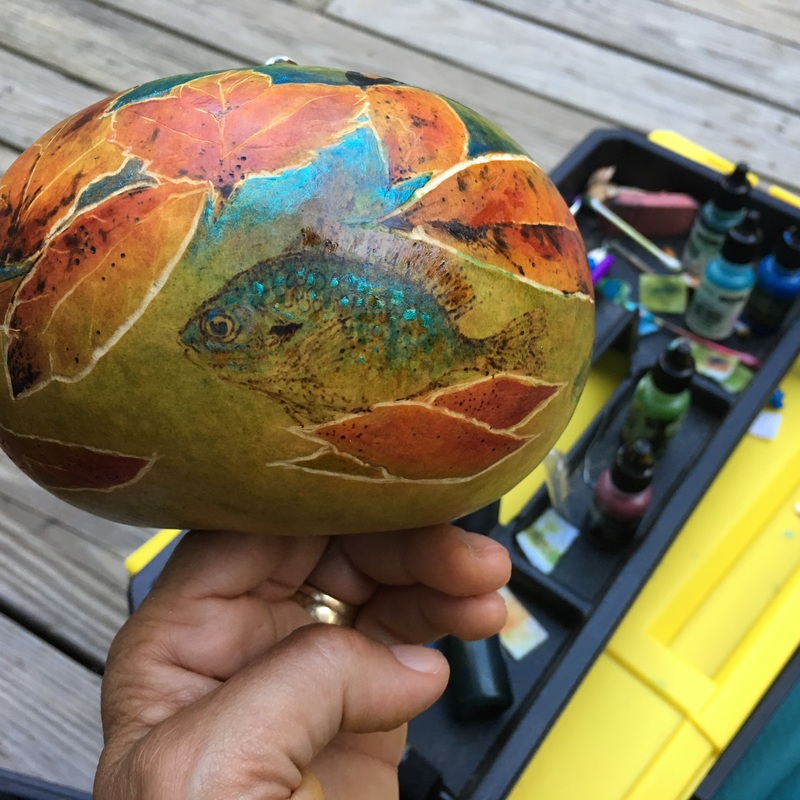
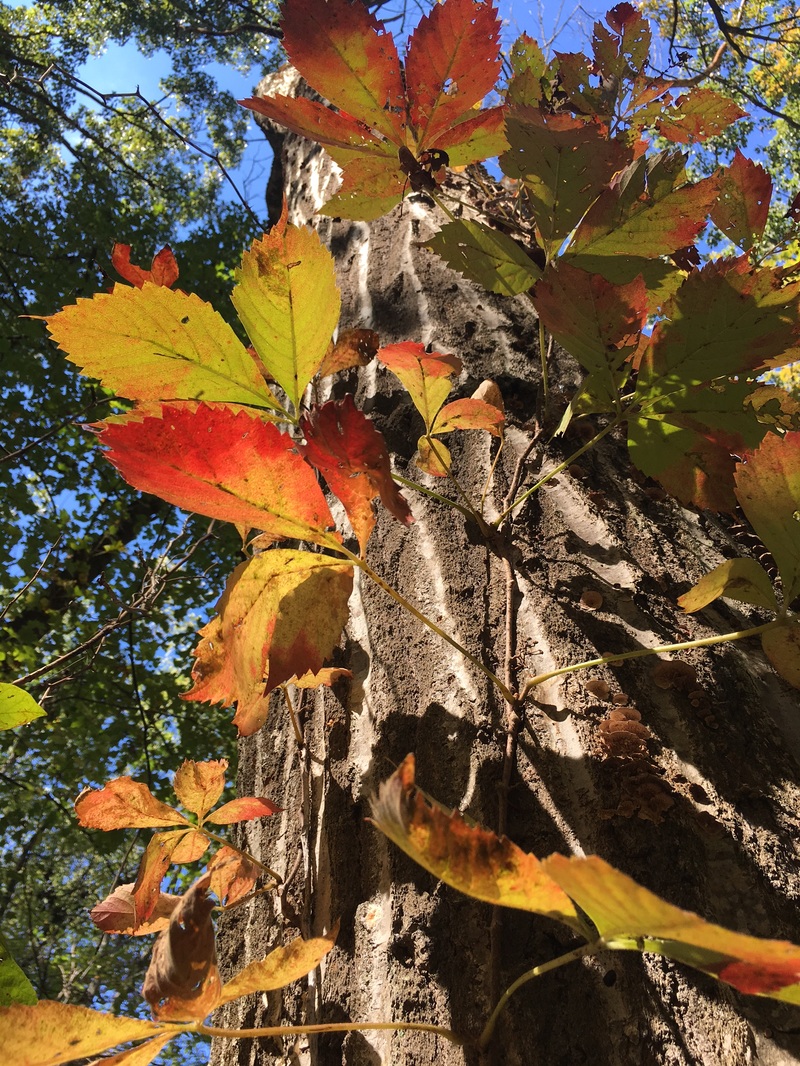
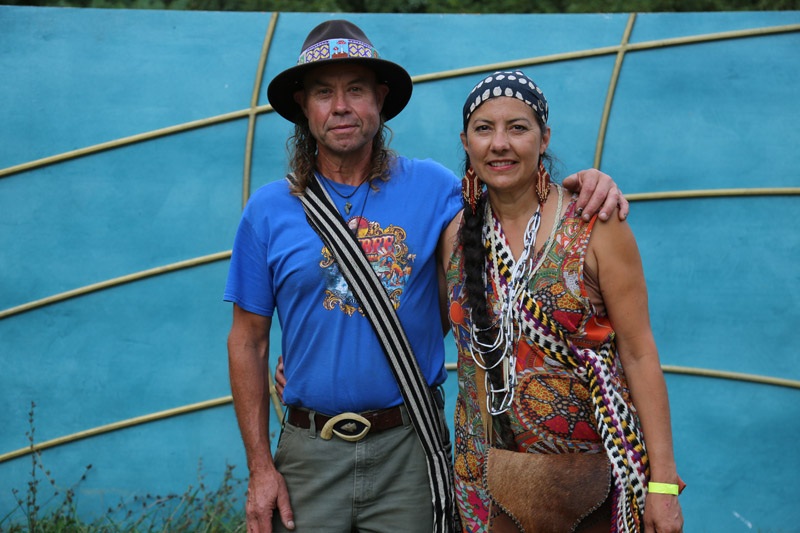
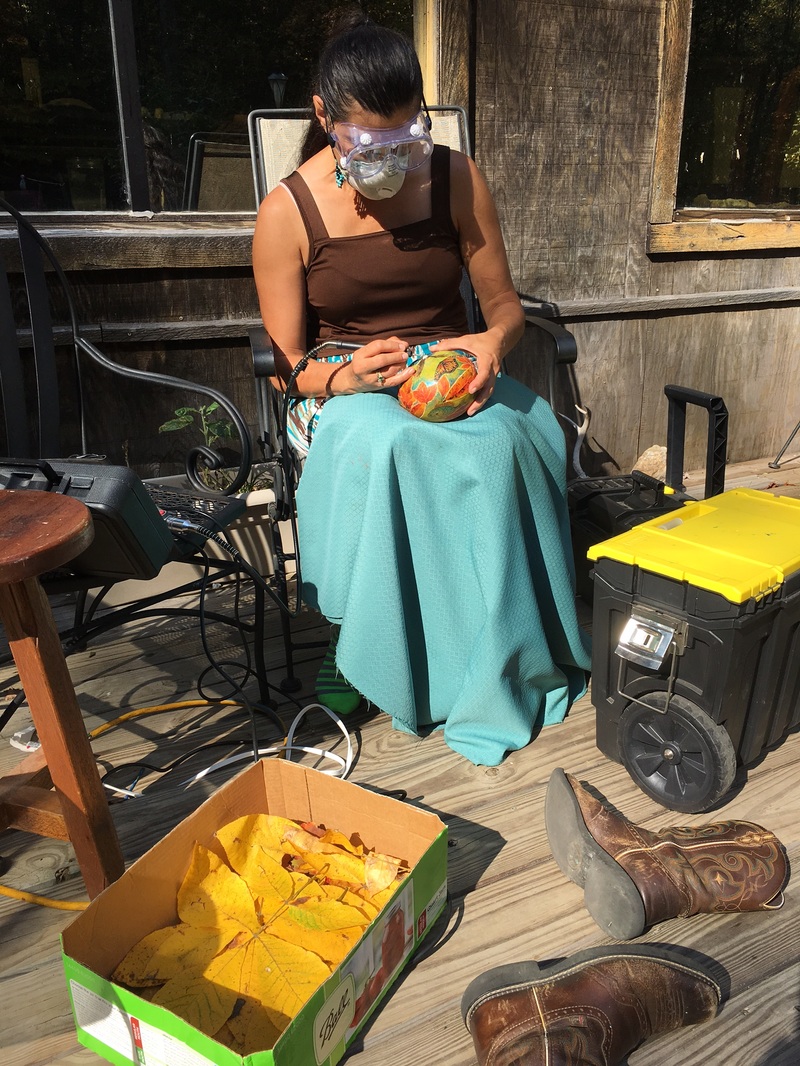
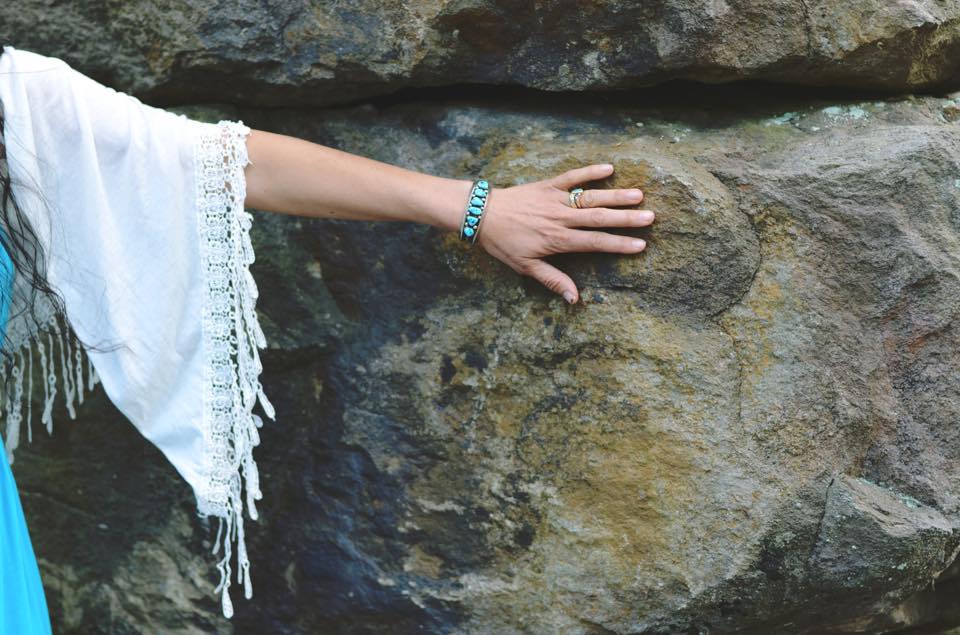
 RSS Feed
RSS Feed